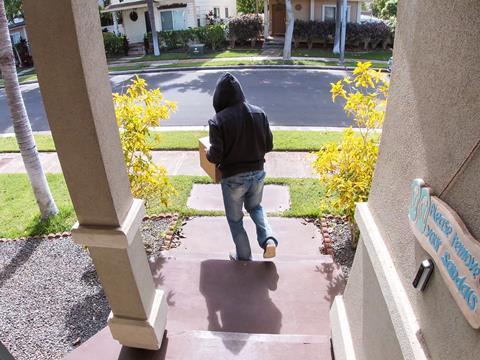
Doorstep parcel theft is on the rise – potentially costing the global economy around US$38.8 billion each year. In the midst of additional complications like strikes and supply chain uncertainty, how can the packaging value chain confront the issue of stolen parcels? Fergal O’Carroll, CRO at Scurri, tells us more.
Results from a recent global survey, the first of its kind, sponsored exclusively by Scurri and commissioned by Penn Elcom, found that a wave of doorstep parcel theft is sweeping the globe. Over a 12-month period, nearly one in every ten people worldwide reported having at least one box lost or stolen, totalling 1.009 billion shipments globally, at a cost of US$38.8 billion.
Despite measures to combat the surge since the pandemic, an all-time high of stolen or lost packages from May 2021 to April 2022 was experienced, with an estimated global increase of 155 million compared to the previous 12 months. This represents an increase of more than 2%. The analysis also indicated that 33% of those surveyed worldwide, have had a package lost or stolen in their lifetime, amounting to 23.5 billion parcels.
This figure is predicted to climb unless preventive measures are implemented. Although it was discovered that the UK has suffered the largest increase, surpassing both Australia and the United States according to Google Trends statistics, searches for “parcel theft” have skyrocketed in recent months as buyers continue to order online, particularly during the holiday season.
YouGov polled 2,000 random customers worldwide. Each country’s demographics were represented by 50% male and 50% female participants ranging in age from 18 to 55 and above. These robberies are typically committed by professional thieves. They are known to follow delivery vans, snatching packages minutes after they are dropped off, while opportunistic criminals take advantage of parcels left on doorsteps.
When the last stage in the delivery process goes wrong, the customer experience falls short of expectations, and customers may be deterred from making another online purchase from that company. Despite the rise of e-commerce, the survey revealed that one in ten consumers worldwide is now hesitant to purchase online for fear of theft, resulting in retailers losing out on prospective clients. When awaiting the arrival of an order, customer anxiety is at its highest, and this type of delivery anxiety is even more prominent during peak season.
For gifting in particular, because the majority of what is sent out does not go to the person who orders it, there is a stronger emotional connection around delivery. When it comes to delivery, customers value reliability just as much as they do speed. Due to the increased concern about delivery, any delay or problem with tracking may result in additional WISMO (where is my order) inquiries.
Given that tracking is typically handled by the carrier rather than the retailer, this separation might have a detrimental impact on the customer experience. To provide a more proactive experience for customers, companies must clearly explain that delivery timetables may be influenced by factors outside their control.
However, being able to offer flexible delivery options during the Christmas season will be critical in avoiding theft this year. Price-conscious shoppers will seek out less expensive delivery choices, but they will also be especially concerned about gifts being delivered on time. Real-time data is essential. Simply reporting that an item has been shipped or is in the hands of a last-mile delivery vehicle is insufficient.
Many consumers nowadays expect their deliveries on a specified day or time. In fact, the majority of customers choose businesses that provide a choice of delivery options and speeds. Offering several shipping alternatives, such as same-day, overnight, 2-day, click and collect, scheduled delivery slots, and express delivery can increase confidence that their parcel will be delivered on time and safely.
The likelihood of incidents involving package theft can be reduced if friction is removed by seamlessly integrating all components of the ordering, shipping, and delivery processes and systems. Additionally, this should help to protect against global supply chain issues that are causing havoc across Europe.
Supply networks must become more agile, and in order to generate insights and make decisions, they must be data-driven. Now, more than ever, it is mission critical for online retailers to take control of their delivery management via one central viewpoint.




















No comments yet